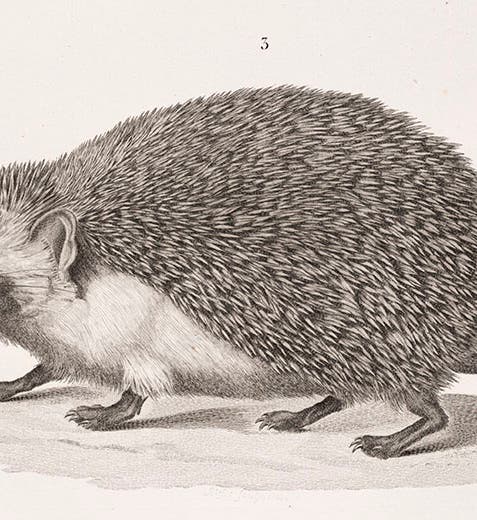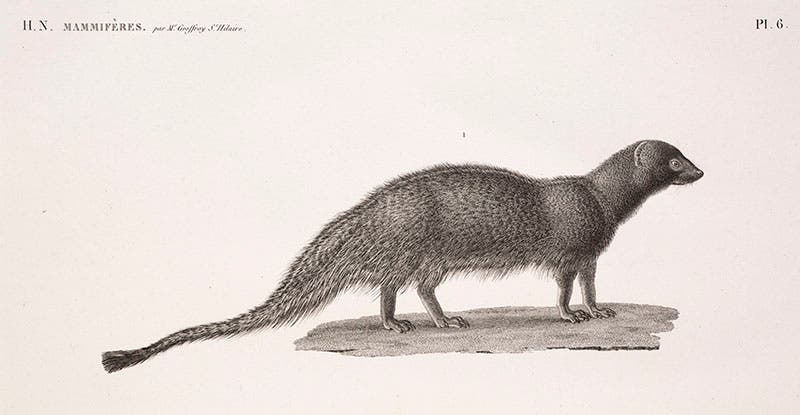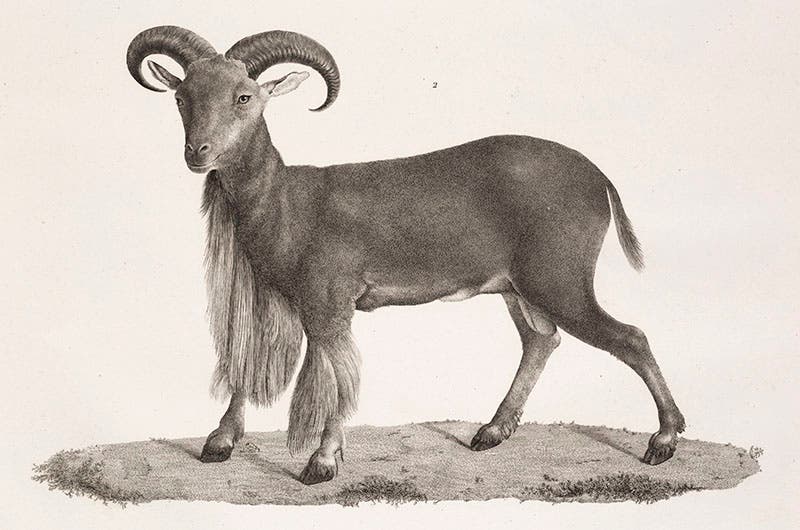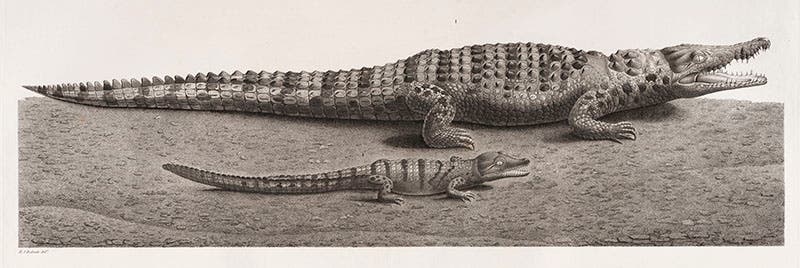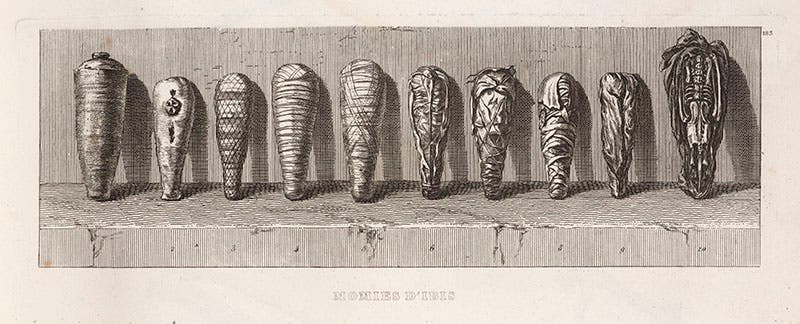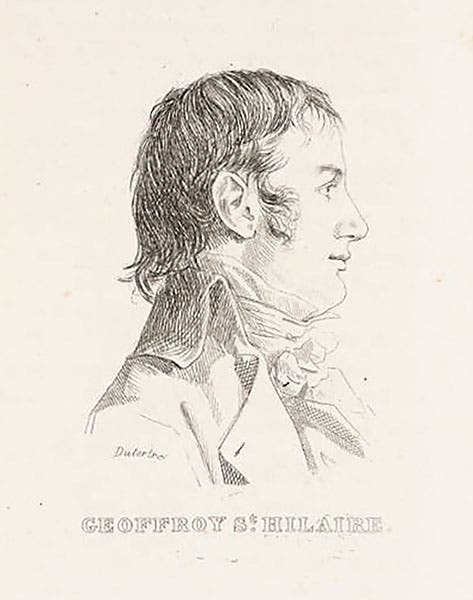Scientist of the Day - Etienne Geoffroy Saint-Hilaire
Étienne Geoffroy Saint-Hilaire, a French zoologist, was born Apr. 15, 1772. Geoffroy Saint-Hilaire (that is the proper form for his long last name) is best known for a controversy involving Georges Cuvier in 1830, in which Geoffroy argued that species are transient forms, variations on certain common organic themes of design, which seemed to deny the fixity of species and aroused the ire and opposition of Cuvier. We should certainly discuss this some day. But there was an earlier aspect of Geoffroy's career that is usually ignored, and we thought we would engage that today and save the controversy of 1830 for another birthday.
In 1798, Cuvier was invited to join Napoleon's expedition to Egypt as principal zoologist, but he declined the opportunity, and so young Geoffroy went in his stead (this was long before the two had fallen out). Geoffroy was only 26 years old (Cuvier was a mere 29), but he had already been professor of zoology at the Museum of Natural History for 5 years. He eagerly accepted the invitation. In Egypt, Geoffroy and his naturalist colleagues assiduously collected specimens of Egypt's diverse fauna, which he then described at meetings of the Institute of Egypt in Cairo and then sent back to colleagues at the Museum in Paris. Much later, his zoological reports would be published in the Histoire naturelle volumes of the Description de l'Égypte (1809-28), which we have in our collections.
All of the animal images here are from that set, including the hedgehog (first image), the ichneumon (Egyptian mongoose; second image), the mouflon (third image), and of course the crocodile. Geoffroy wrote all of the descriptions, but the drawings were made by a variety of expeditionary artists.
The objects from Geoffroy that aroused the most interest in Paris were the ibis mummies found by him and his companion J.C. Savigny in Memphis; there were literally thousands of them lined up in ceramic jars in the tombs there (fifth image). The ibises were over 3000 years old and were indistinguishable from modern ibises. This inclined Cuvier in particular to affirm that there is no historical evidence for species change.
Nearly all of the savants on the expedition had their portraits sketched by André Dutertre, and the portraits were published in 1830; Durtertre's drawing of Geoffroy Saint-Hilaire was included (sixth image). The sketch shows an intelligent and amiable sort of fellow. His later truculence and animus for Cuvier might have been a result of the fact that, for three years, he wrote Cuvier regular letters from Cairo, and Cuvier never once wrote back.
We devoted a page to Geoffroy and the ichneumon in our exhibition of 2006, Napoleon and the Scientific Expedition to Egypt. When Geoffroy was disabled in 1841, he was succeeded as professor at the Museum by his son Isidore, who has already had his moment in the limelight as a Scientist of the Day. Dr. William B. Ashworth, Jr., Consultant for the History of Science, Linda Hall Library and Associate Professor, Department of History, University of Missouri-Kansas City. Comments or corrections are welcome; please direct to ashworthw@umkc.edu.

